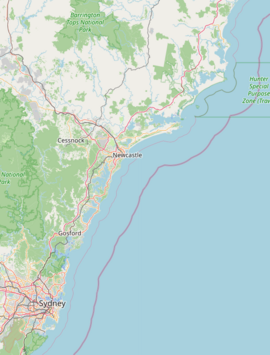Booragul, New South Wales facts for kids
Quick facts for kids BooragulGreater Newcastle, New South Wales |
|||||||||||||||
|---|---|---|---|---|---|---|---|---|---|---|---|---|---|---|---|
| Population | 1,415 (2011 census) | ||||||||||||||
| • Density | 1,180/km2 (3,100/sq mi) | ||||||||||||||
| Established | 1829 | ||||||||||||||
| Postcode(s) | 2284 | ||||||||||||||
| Area | 1.2 km2 (0.5 sq mi) | ||||||||||||||
| Location | 21 km (13 mi) WSW of Newcastle | ||||||||||||||
| LGA(s) | City of Lake Macquarie | ||||||||||||||
| Parish | Awaba | ||||||||||||||
| State electorate(s) | Lake Macquarie | ||||||||||||||
| Federal Division(s) | Hunter | ||||||||||||||
|
|||||||||||||||
Booragul is a suburb in New South Wales, Australia. It's part of the City of Lake Macquarie, which is near the larger area of Greater Newcastle. You can find Booragul on the western side of Lake Macquarie, just north-northeast of the town of Toronto.
Booragul is easy to get to, as it has its own train station, Booragul railway station. This station is on the Central Coast & Newcastle Line, making it simple for people to travel to and from the suburb.
Contents
A Look Back at Booragul's Past
The First People
Long ago, the first people to live in this area were the Awabakal Aboriginal people. They have a deep and important history with the land around Booragul.
Early Industries and Growth
In the early days of Booragul, one of the first businesses was a slaughterhouse. This was an important industry for the community at the time.
As the suburb grew, more facilities were built for the people living there. Booragul Public School opened its doors in 1955, giving local children a place to learn. A few years later, Booragul High School was built and opened in 1958, providing education for older students.
Housing for New Families
After World War 2, many new houses were built in Booragul. About 72 homes were constructed on streets like Ellesmere Street, Primrose Street, Farlow Street, and Gainford Street. These houses were first used to provide homes for people who had moved to Australia from other countries.
Later, some of these houses were used by families of people serving in the Australian Army and Royal Australian Air Force. In the late 1970s and early 1980s, these homes were sold off to private owners.


